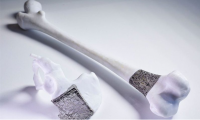-
Australian researchers to use 3D implants for bone tumour surgery
- Source: medicaldevice-network
- 447
- November 3, 2017
-
Researchers develop digestible sensors for monitoring the gastrointestinal tract
- Source: techcrunch
- 644
- October 24, 2017
-
KU Leuven researchers identify new rapid response mechanism against bacterial infections
- Source: news-medical
- 604
- October 24, 2017
-
AbbVie and Harpoon Therapeutics Announce Immuno-Oncology Research Collaboration
- Source: finance.yahoo
- 684
- October 23, 2017
-
US researchers develop surgical implant to accommodate child growth
- Source: medicaldevice-network
- 474
- October 17, 2017
-
ICR researchers demonstrate use of genetic test for prostate cancer therapy
- Source: medicaldevice-network
- 643
- October 12, 2017
-
UOW researchers secure grant to develop new medical device for bedside brain monitoring
- Source: medicaldevices-business-review
- 697
- September 20, 2017
-
UK researchers develop medical camera to see through body
- Source: medicaldevice-network
- 457
- September 6, 2017
your submission has already been received.
OK
Subscribe
Please enter a valid Email address!
Submit
The most relevant industry news & insight will be sent to you every two weeks.













